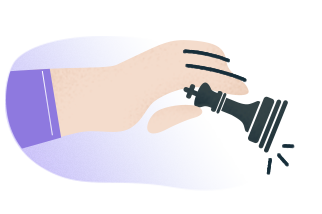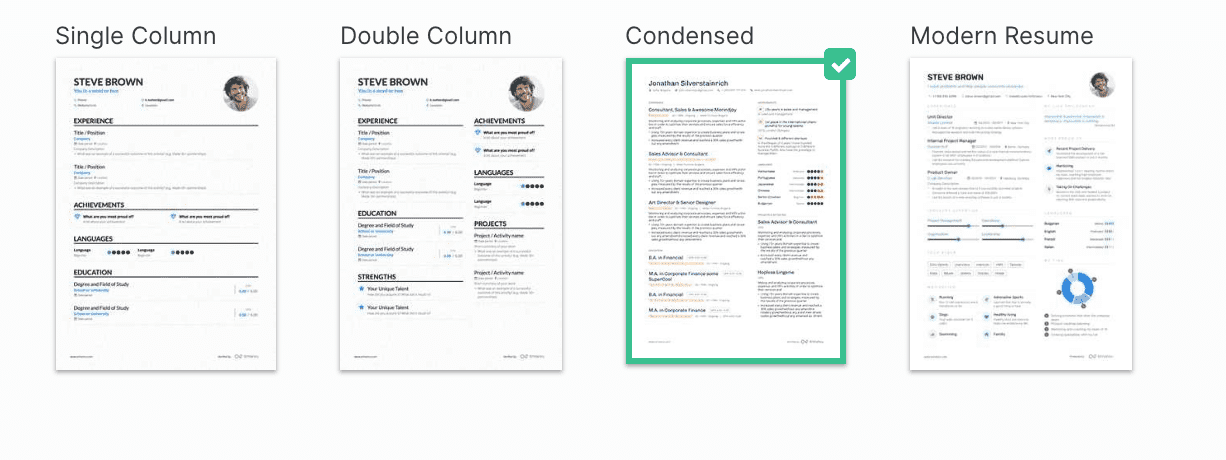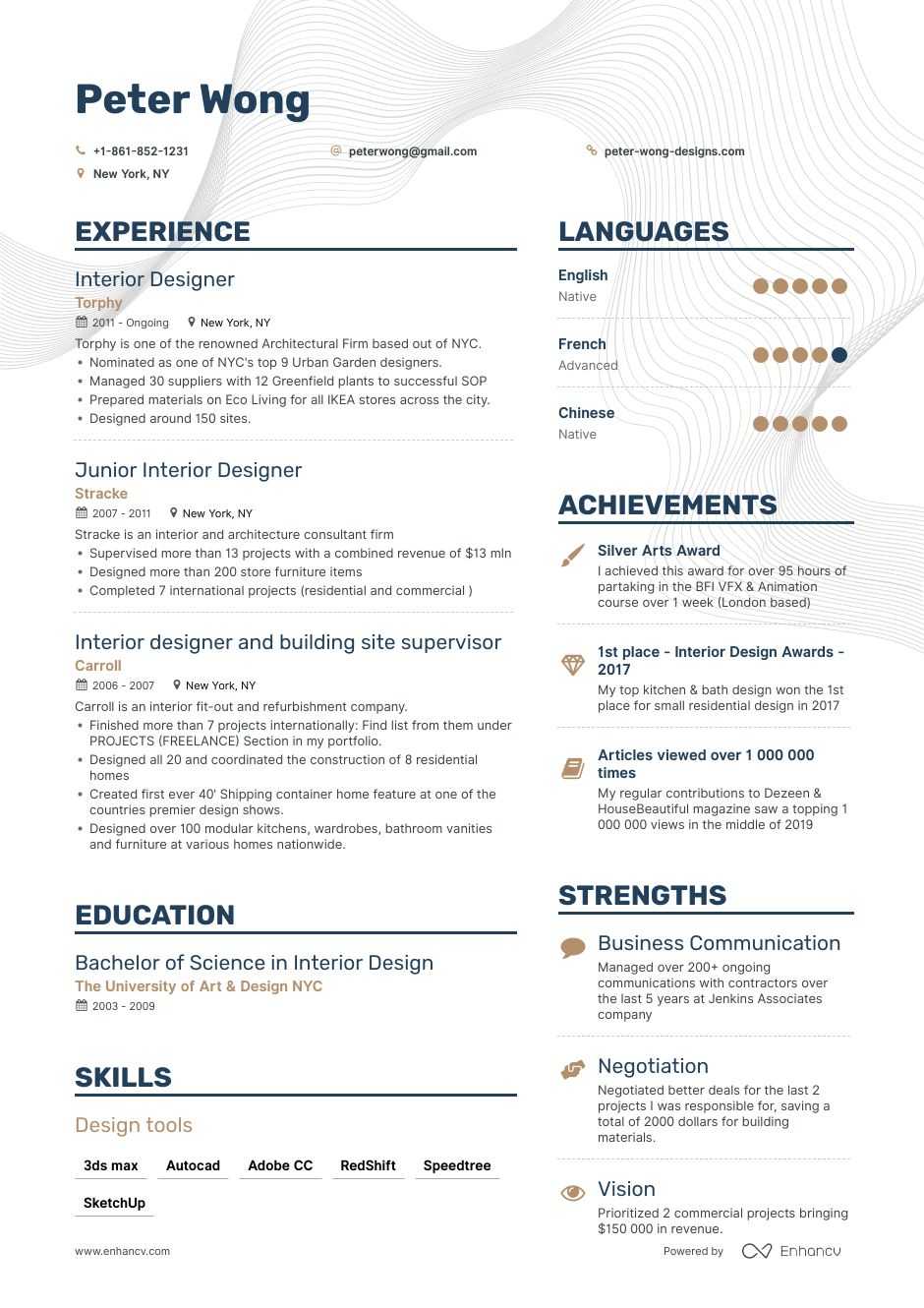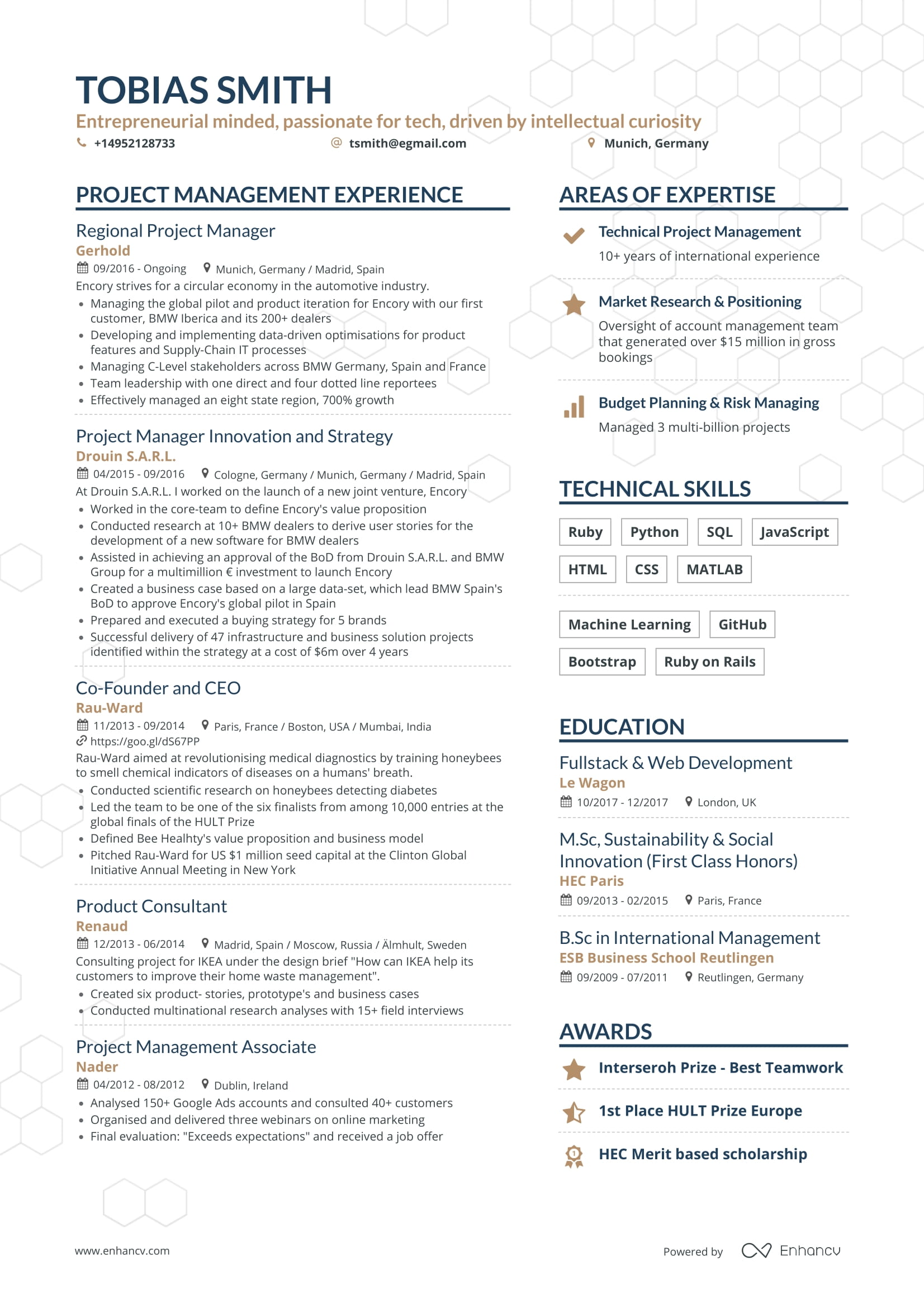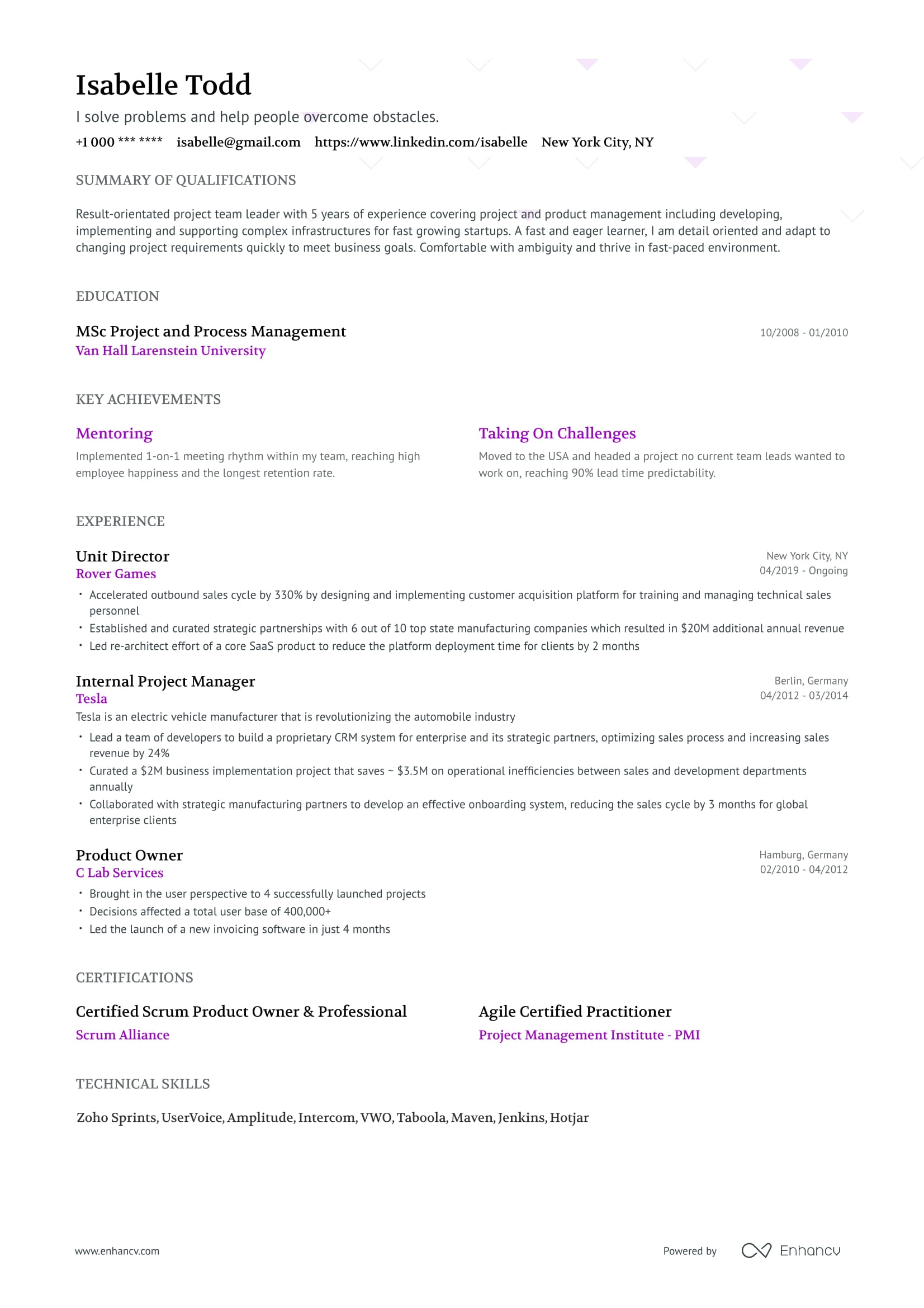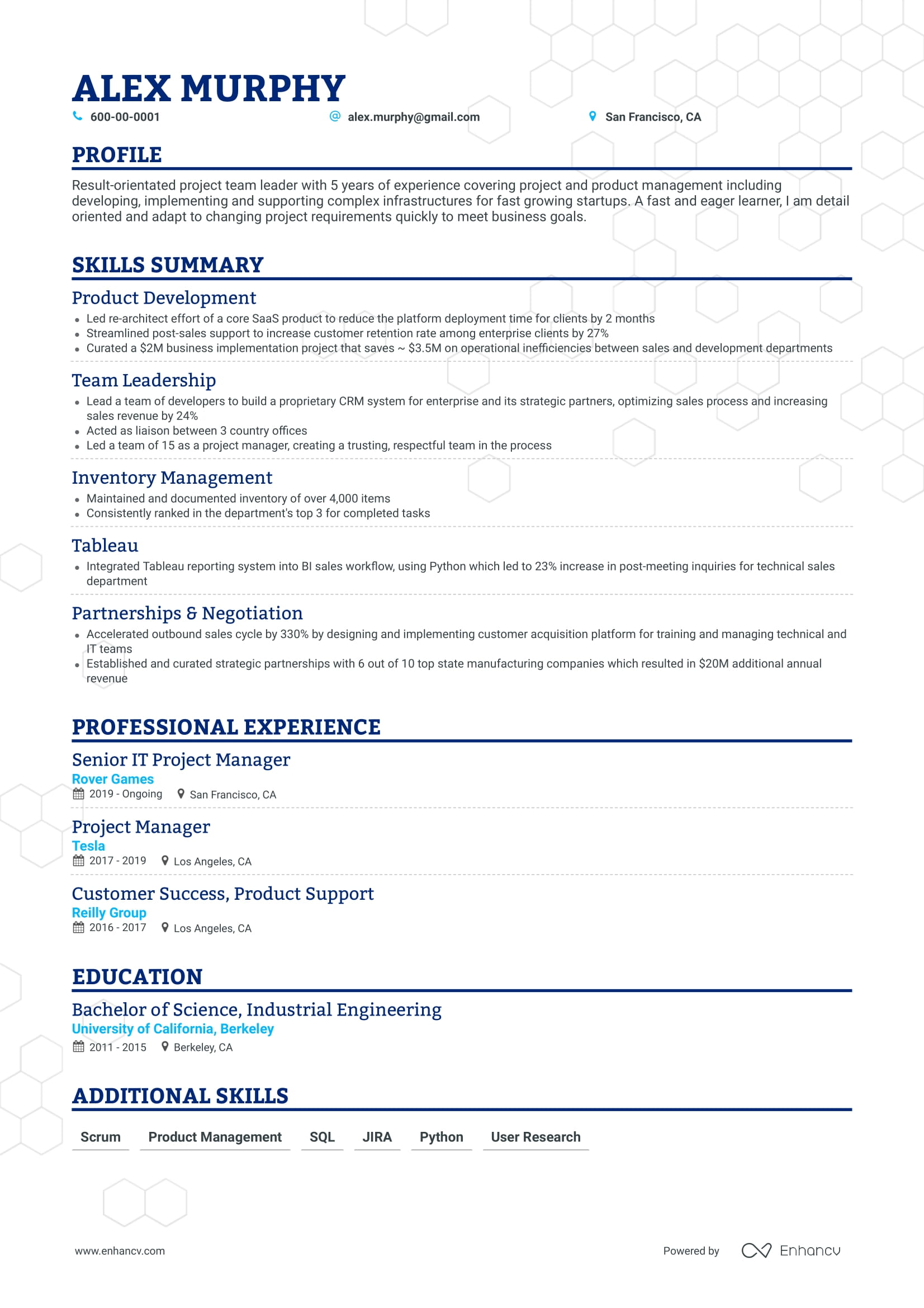Example Interior Designer Resume - Browse more resume templates and build a stand-out resume
It’s hard to explain a $16 bln industry growth in the past 5 years, if interior design was only about creating a comfortable home environment for other people.
In reality, it’s so much more than that.
Applying at an agency with your Interior Designer resume, you should prove you can optimize natural lighting and space dimensions beyond a simple efficient solution.
Did you help a struggling client utilize the layout of an oddly shaped room?
Have you improved on the least appealing aspects of a commercial office?
It’s about proving your value and it takes a blend of enthusiasm, skill and experience to put that together in a resume.
Let’s start from the ground up and build yours by exploring job-winning Interior Designer resume samples.
Here’s what you will learn today:
- Browse through a real Interior Designer resume example that won the candidate an interview;
- What do recruiters want to see in your Interior Design resume experience;
- How to make sure your portfolio brings the maximum impact in your resume;
- Tips to optimise your resume layout to best represent your background;
- The most efficient way to show your education and certifications;
Take a look at this Interior Design resume example
Looking for related resumes? Enhancv here to help you out
How to write Interior Designer resume: specifics, sections & layout
“Anyone can decorate a house, but not everyone can bring all aspects of interior design together.”
That’s a statement you must have read about when you first decided to enter the industry.
There’s a strong debate in the interior design community between designers and decorators about who’s got the better of whom.
So why have people like Kelly Wearstler, Jonathan Adler and Nate Berkus reached a celebrity-status in the field of interior design without an ASID degree?
What is really interior design all about? And how do you present that on your resume?
It depends on many factors, but let’s explore one of them - your niche.
Working with residential clients? Would all of them really want to know you are state licensed?
Or, they’ll want to see in your portfolio and resume that you:
- Have an innate flair for picking the right spatial arrangement, textiles, color and accessories?
- Show pure enthusiasm about fabrics, accessories and items and how they inspire you?
Even the best education won’t help you if you’re not able to prove your value, build great relationships and be ready to learn.
But, this is usually where the line is drawn.
What if, instead, you’re looking to get hired by a governmental agency, architect and builder firm, business owners or a picky client?
There’re many less exciting details about what a proper Interior Design resume entails.
- Can you show proficiency in computer-aided drawing (CAD) programs?
- Do you have the skills to make structural and functional interior changes from the start?
- Are you familiar with the structural integrity of buildings, building codes, accessibility standards and inspection regulations?
- What’s your experience in green design, designing for elderly or modern architecture?
- How good you are in picking out the right subcontractors and suppliers for a job?
A great Interior Designer resume sits at the crossroad between showing a natural flair for functional and eye-pleasing designs and being technically sound in various regulations and CAD programs.
However, we are not here to teach you how to become an Interior Designer and give you the answer whether education is key.
We are here to help you present your experience, skills and qualifications in the best way possible in your resume.
But even without a degree, stick around. There are practical nuggets of information for everyone in the interior design industry below.
Let’s get down to business.
The most impactful Interior Designer resume sections
- Header (with a portfolio link)
- Career summary/objective
- Experience with top career highlights
- Technical & soft skills
- Education & Certifications
You only need one page to fit all that information.
Start by selecting a functional resume format.
4 different Interior Designer resume layouts
Now that you figured out what will go into your resume, it’s time to pick the layout. Ultimately, it will depend on your experience and how you want to appear as a candidate.
You’ve got several options:
- Single column template - pick this one if you’re looking to get hired as an entry-level Interior Designer. It’s a great representation of your skills and competencies, without coming off too scarce.
- Double column template - this one is ideal for candidates with several years behind their back. Coupled with your portfolio, it gives a good overview of your background in a reverse-chronological order.
- Condensed template - if you’ve got more experience and you’d like to show more relevant projects, you can choose this compact representation of the classic double-column resume.
- Creative template - not all that glitters is gold, so you have to be careful about overdoing your resume with a creative template. Done right, though, and you’ll show you’re a good culture-fit for the dream designer agency.
There should be clarity in your resume header
You may be applying to a boutique interior design agency. And, your header originally looks like this:
At first glance, everything checks out.
Throw in a second look, though, and issues start popping up.
The Hiring Manager or the Chief Architect may want to know whether you:
- Are specialised in an interior design category (if the job requires that);
- Have a visual proof of your background (e.g. portfolio and/or social media profiles on Instagram or Pinterest);
- Hold any necessary certifications;
And, you can easily present that info from the top, making it eye-catching and saving the rest of your resume for other important details.
Let’s do the header one more time, avoiding generalization and pointing out your strong sides right off the bat.
This way a Hiring Manager will be aware that you’ve specialized in business and corporate office design, and will have a chance to scroll through a cherry-picked list of your top design work.
Otherwise, keep your header clean and simple. Include your email, name and other contact data requested.
Now, off to making a memorable resume summary.
How to write an Interior Design resume summary without any confusion
Your resume should prove what you’ve created in the field of interior design.
It will also have to give off the vibe of a person who’s aware of their own capabilities and believes in their taste and choices.
Otherwise, it’s pretty much game over.
This summary doesn’t strike as a person who’d you trust to meddle with your house and its interior.
Worse, you get a sense of a “Dolly decorator”.
You can use your resume summary to speak about:
- Your passion or area of focus;
- Highlighting a dragon slaying story (a career achievement you’re most proud of);
- Design tools and technologies you’re proficient with;
- Any special recognition for your design work (awards, magazine features, etc.);
- Mention your years of experience to solidify your expertise;
Let’s see an improved version.
Reading this summary, a recruiter can’t help but feel compelled to dig deeper throughout your experience.
But what if you lack the bread and scope of experience from the likes of Nate Berkus or David Bromstad?
Look at the bottom two examples where we’ll examine interview-worthy student Interior Designer resume objectives.
2 Entry-Level Interior Design resume objectives
The first one is not exactly aesthetically pleasing.
Unfortunately, this summary doesn’t show whether the candidate has put up serious work behind her back to get a job.
Let’s throw in a few details more and see how its impact is going to change.
Looks like the summary of a moderately experienced designer. And, in reality, it didn’t take too much to dig in past experience to build it.
The candidate has featured school projects and pro bono work done for reduced rates or completely free.
She’s talked about publications in popular magazines, and, if she had awards from ASID or other institution, she could mention them, too.
If you’re looking for more entry-level resume tips, scroll for a separate section on fresher Interior Design resume tips.
Right now, we’ll get behind getting the better of your senior experience on paper.
The best way to frame your Interior Designer resume experience
Let’s transfer the impact from the summary into your experience section.
Interior design is a niche which you get better paid (or even any) jobs by building a positive reputation.
In specific cases, you’ll work for a larger firm, especially in the beginning of your career journey.
So, your experience section will serve a supporting claim to your resume portfolio.
Nevertheless, you’ll need to emphasise these main points when talking about your background - your project management experience and your technical expertise.
Let the portfolio speak for your creative side.
Your inherent knowledge of the field will show you can coordinate a smooth communication and interaction between handymen and material contractors when it comes to executing a project.
Your technical expertise in CAD and other software will prove your value in visualizing how spaces will be used, and sketching out design plans.
Let’s compare two senior Interior Designer experience sections and see what’s off putting and what meets the expectations.
2 Interior Designer resume experience examples
You can’t really get much from the experience bullets above.
They read like a simple job description and don’t speak of the actual impact the designer made.
- How many students he was responsible for?
- What was the team size and project scope he worked for?
- Any immediate signs work was done right (e.g. client satisfaction data?)
- What are the names of the magazines and lists the designs were featured in?
Let’s do this once more, only this time with a focus on numbers and results.
Now, you can clearly see the candidate put an effort to match his value proposition with each specific experience.
When you’re up to writing your experience section, do think about the following:
- What exactly did you do?
- Why did you do it?
- What was the final result? (preferably quantified with a number);
But what if you’re just entering the field and you’re lacking the experience?
How to write an entry-level Interior Designer resume experience
Here are 4 tips for you:
- List projects you did for free in your portfolio and experience - where you volunteered to help local non-profits, friends and family, or a small business that doesn’t have the funds to pay a professional designer.
- Apart from showing you can do the grunt work, show your qualifications, too - a certificate or associate’s degree - works well when coupled with relevant portfolio.
- You can also add an administrative job, or assistant position you’ve taken at a design firm or under the mentorship of an experienced interior designer.
- Bet on the skill section as well and expand on your technical and soft skills (more on that later). Read the job description and match it with your resume.
It’s going to be more difficult for students just going out of university, so you’ll have to dig deeper into transferable experience.
If project management is listed as a necessary skill to have, consider looking for relevant experience, such as running a club or organization back at school.
What are the most convincing ways to add your certificates & education
How to feature education on an Interior Design resume
Do you have plenty of experience behind your back?
Then your education section should probably look something like this.
However, if you’re just entering the industry, you’d need to build up your portfolio and experience.
Then, having a bit more comprehensive education section will make more sense. You’ll be able to tell the company you’re applying for that:
- You’ve completed relevant projects;
- You’ve received recognition for your studies/work;
Adding certifications to your Interior Designer resume
Do you want to practice interior design with a license? Then you’d need a certification.
Typically, the National Council for Interior Design Qualification exam is the go-to place.
In order to take the exam, you’d need a bachelor’s degree in a relevant field, or a minimum of two years working experience.
And, if you want to practice in the State of California, you must take the California Council for Interior Design Certification (CCIDC) exam.
Top 6 Interior Design certifications to add to your resume
- NCIDQ - National Council for Interior Design Qualification
- AAHID – American Academy of Healthcare Interior Designers
- CIDA – Council for Interior Design Accreditation
- NKBA – National Kitchen and Bath Association
- CCIDC - California Certification for Interior Design
- ASID - American Society of Interior Designers
Why certifications though?
You probably heard that many famous interior designers are technically, interior decorators (i.e. not certified).
Would the lack of certificate stop you from being any good at the job? Not really.
Will it help you get better jobs? It depends.
It’s not a guarantee for success, unless coupled with hard work, building great relationships and a proper skillset.
How should you emphasise your hard and soft skills
In general, the skills you put in your resume should closely match the ones written in the job description.
Lying is not tolerated on resumes, however, you should try to find a match between your value proposition and what the company wants.
But how should your properly show your skills?
Listing hard skills on your resume
This is a great way to list your hard skills, such as the ability to work with design software.
It’s also important for ATS (Applicant tracking systems) to detect necessary words and phrases which are also listed in the job description.
Some of the companies that attract a large number of candidates use them to ease the recruitment process.
What are the top 21 skills to list in an Interior Design resume
- AutoCAD
- Adobe Suite
- SketchUp
- Archicad
- Autodesk Revit
- 3D Max
- Vectorworks
- Live Home 3D
- Chief Architect
- 3D Homeplanner
- Color theory
- Technical drawing
- Budgeting
- Project management
- Consulting
- Contracts
- Inspections
- Property Safety Codes
- Structural Design
- Real Estate
- Zoning Regulations
Adding soft skills to your resume
Listing soft skills on resumes has become somewhat of a walking on thin ice.
You’re most likely to come off sounding unnatural by just throwing cookie-cutter words like communication and leadership in there.
And, sometimes, people just avoid listing them at all.
What if we told you there’s a way to have your cake and eat it, too?
All you have to do is just connect your soft skills with a situation in the past where the said skills helped you do the job.
Observe the following example.
Now, would you take someone who simply wrote “attention to detail”, or you’d go for the candidate who explained how this skill helped him notice a miscalculation in the project that saved the business $25 000 in building materials?
14 Impactful soft skills for Interior Design resumes
- Attention to detail
- Multitasking
- Leadership
- Verbal & written communication
- Team work
- Listening
- Prioritization
- Time management
- Reliability
- Problem sensitivity
- Negotiation
- Vision
- Collaboration
- Follow-through
In summary, here are the top things your Interior Designer resume will be judged upon:
- Whether or not you’re showing a perfect balance between soft and tech skills, as well as technical knowledge in Interior Design & architecture;
- Your proficiency in CAD software and sketching programs;
- Demonstrated knowledge in building & accessibility regulations, as well as spatial concepts;
- A collection of relevant certificates, such as NCIDQ or ASID;
- Your experience in dealing with & coordinating multiple building contractors;
- Your value proposition coupled with measurable achievements;
